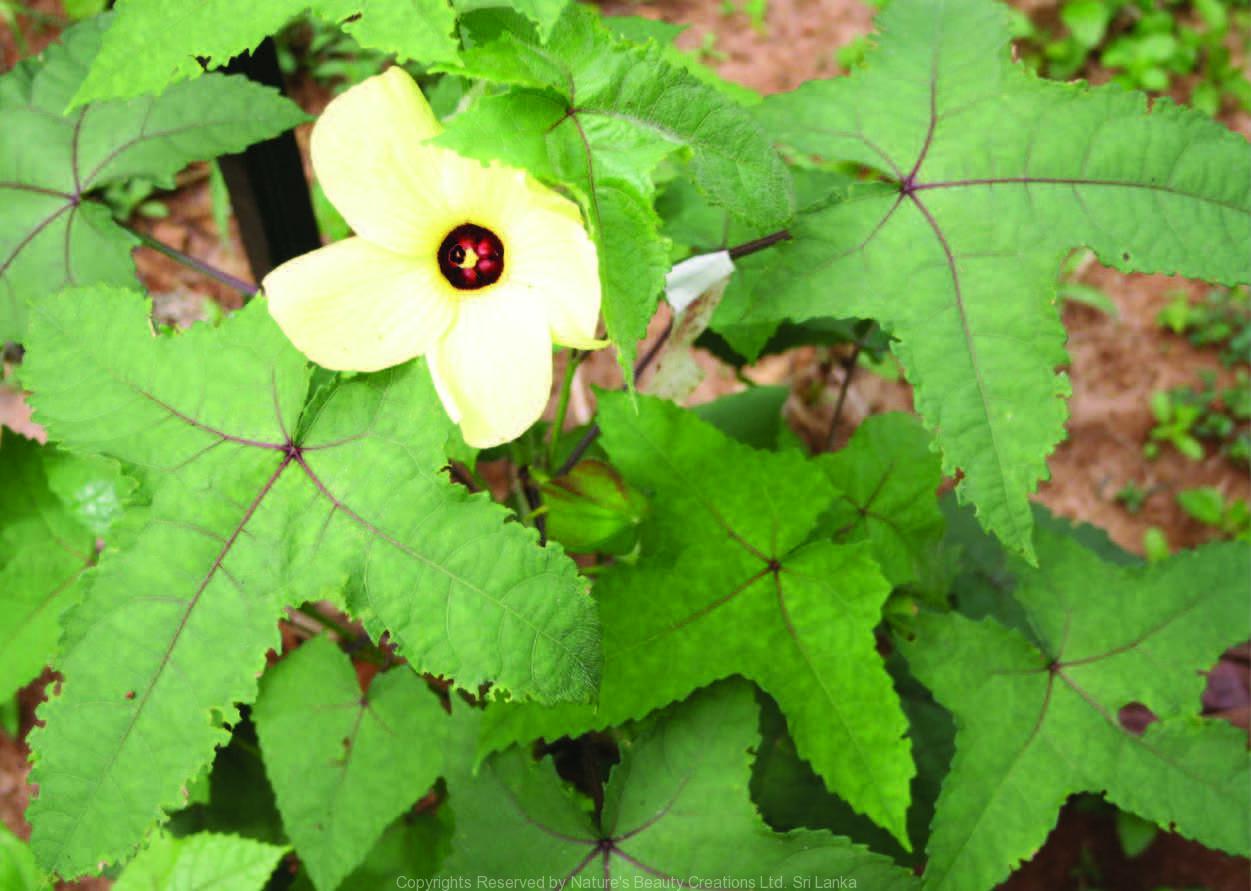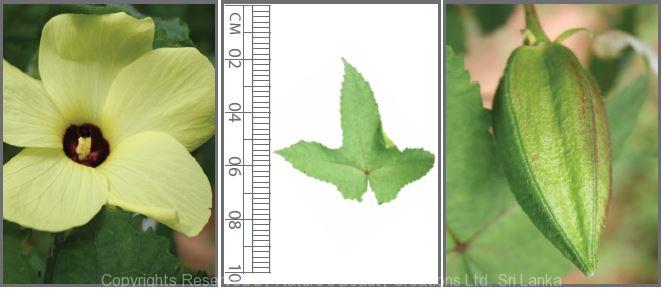

Traditional Knowledge
Useful plant parts :
Leaf, seed and root
Uses in traditional medicine :
- Powdered seeds mixed with ghee is taken for nervous debility
- Paste made from seeds is applied on skin for itching
- Crushed young leaves are applied on the forehead for headaches
- Leaves are used as a snake bite remedy and as a cardiotonic
- Leaves and roots are used to treat rheumatism, varicose veins, fever and gonorrhoea
- Seeds possess demulcent, stomachic and antispasmodic properties
Scientific Research
Chemical constituents:
Ambrettolide derivatives from seed oil; pyridine and pyrazine derivatives from seeds; flavonoid: myricetin from aerial parts
Bioactivity :
Hydroalcohol extracts of seed and leaves: antiproliferative, antimicrobial, antioxidative; myricetin: antihyperglycaemic and useful adjuvant therapy for patients with insulin resistance
Clinical:
References : Du, Z. et al., (2008), Volatile Organic Nitrogen-Containing Constituents in Ambrette Seed Abelmoschus moschatus Medik (Malvaceae), Journal of Agricultural and Food Chemistry, 56, 7388-7392. Gul, M. Z. et al., (2011), Evaluation of Abelmoschus moschatus extracts for antioxidant, free radical scavenging, antimicrobial and antiproliferative activities using in vitro assays, BMC Complementary and Alternative Medicine, 11, 64. Liu, I. M. et al., (2005), Myricetin as the Active Principle of Abelmoschus moschatus to Lower Plasma Glucose in Streptozotocin-Induced Diabetic Rats, Planta Med, 71(7), 617-621. Liu, I. M. et al., (2007), Improvement of insulin sensitivity in obese Zucker rats by myricetin extracted from Abelmoschus moschatus, Planta Med, 73(10), 1054-60. Liu, I. M. et al., (2010), Abelmoschus moschatus (Malvaceae), an aromatic plant, suitable for medical or food uses to improve insulin sensitivity, Phytotherapy Research, 24(2), 233-239.
Copyrights Reserved By
Natures Beauty Creations




